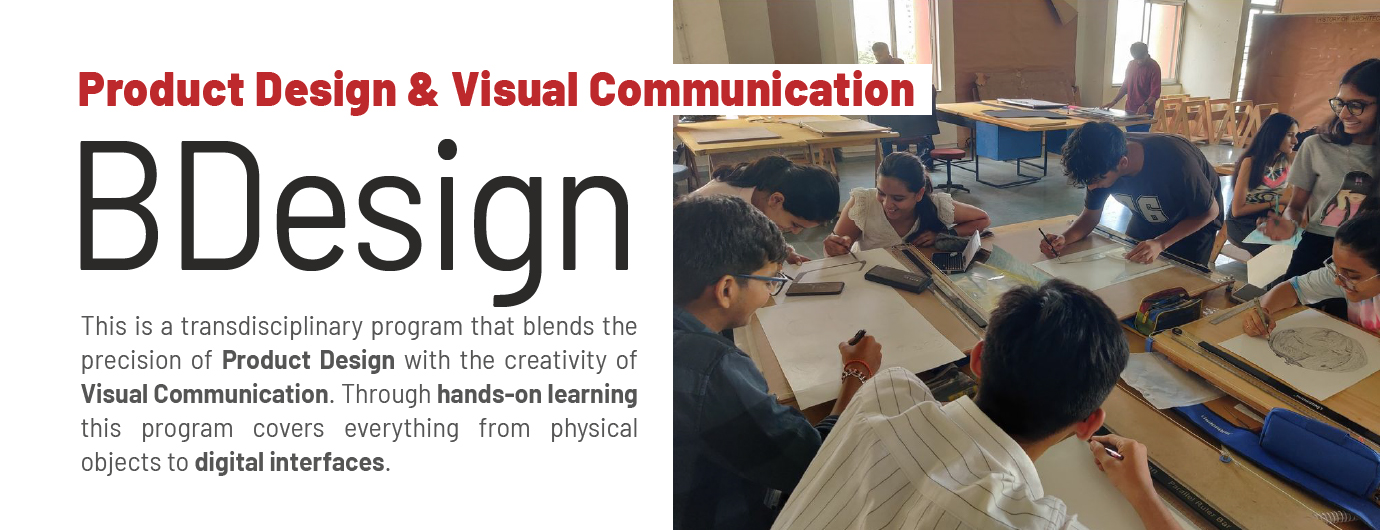The BDesign (Product and Visual Communication) program at Navrachana University offers two interconnected specializations that reflect the evolving nature of design practice today. Students begin with a shared foundation and progressively shape their individual trajectories through studios, workshops, electives, and real-world projects.
Product Design
This specialization equips students to design tangible and phygital products that respond to human needs, behaviors, and aspirations. With a strong focus on material exploration, making, and ergonomics, students develop a deep understanding of how form, function, and context interact. They learn to think through their hands—prototyping ideas across a range of materials and techniques, from traditional craft to digital fabrication.
The curriculum fosters sensitivity to sustainability, systems thinking, and spatial relationships, encouraging students to design for diverse environments—from domestic to public, from wearables to immersive installations. By integrating storytelling, speculative design, and user research, students are prepared to create products and experiences that are not only usable and functional but also culturally relevant and future-forward.
Visual Communication
This specialization nurtures designers who work with words, images, motion, and interaction to create meaning in the visual landscape of everyday life. Students explore the power of visual storytelling across media—print, screen, space, and beyond. Through typography, image-making, branding, motion graphics, and interactive systems, they learn to communicate complex ideas with clarity and emotion.
Rooted in communication theory, semiotics, and a deep engagement with cultural contexts, the curriculum helps students build a critical lens toward media, audience, and form. From editorial design to digital interfaces, public graphics to speculative narratives, students create work that connects, informs, persuades, and provokes thought—preparing them for the wide-ranging future of design.



